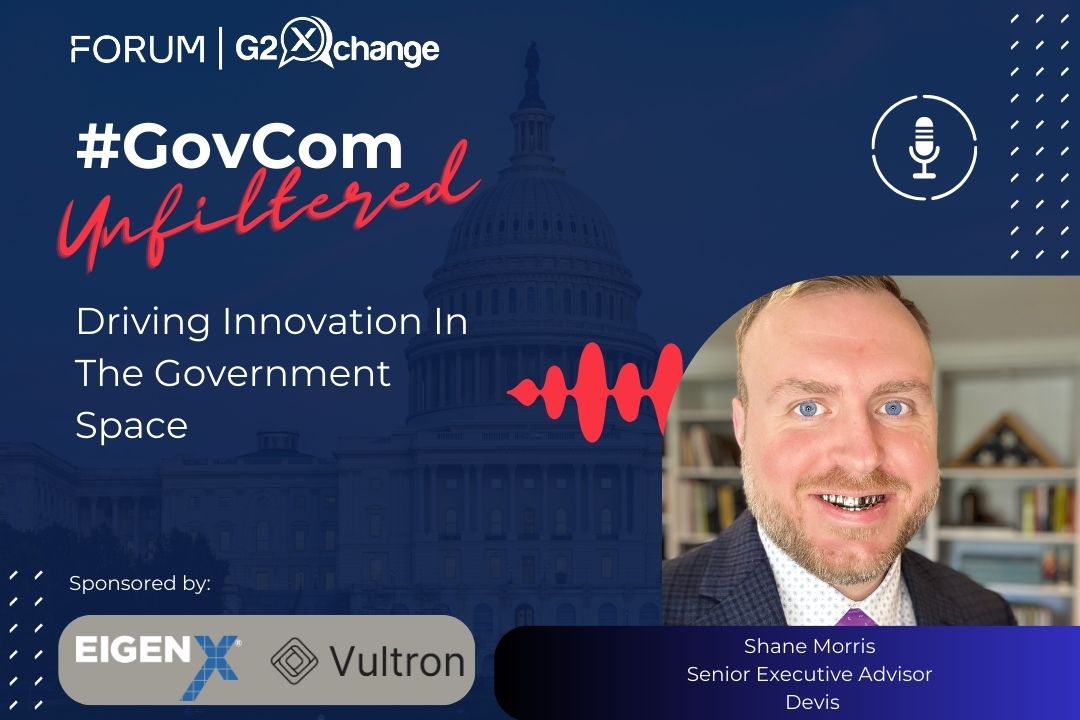In her interview with Amwell’s Chief Medical Officer, Dr. Peter Antall, and its Group Vice President, W.B. “Mitch” Mitchell early in March, FedHealthIT’s President, Susan Sharer, explored with the two the expectations for the coming weeks and months for telehealth, data as a tool, and Government’s response. She circled back recently to find out how things have played out and to look at what we might expect next.
How Have Things Evolved?
We’re still seeing many patients with coronavirus symptoms and those with other medical conditions who can’t, under the current environment, access normal care but there has been a bit of a plateau from a national perspective. This will give everyone a chance to catch their breath.
We can also see that early efforts to ramp up to meet supply and demand are now paying off.
Clinically and in terms of policy, there has been a shift to the next stage of thinking, moving from an all hands-on deck emergency to how we help patients return to normal life. That shift in focus is evident in laboratories as well, as they pivot from swab testing to considering antibody testing.
Part of what has been happening in the background is the rapid operationalizing of surges on infrastructure and the herculean effort that has been required to scale telehealth delivery across systems.
What Has Been the Most Surprising?
One of the most surprising things we have seen during this entire outbreak has been the propensity for providers to adopt telehealth. As ambulatory operations closed or partially closed, providers needed a solution and telehealth has been their solution of choice.
Some providers have chosen to use chat functionalities or phones to provide virtual care but many have seen this as an opportunity to use more established technology. These providers recognized that providing care virtually is not just a way to see patients in the short term, but understood that they can’t rely on the traditional way of seeing patients as the only way to practice any more.
Telehealth will become part of our new normal. Patients have experienced it- the ease, convenience, shorter wait times, greater access to the specialists needed, and the flexibility and they will demand it in the future. Even in a post-coronavirus world, we expect there to be greater interest from providers for those same reasons.
The consumer experience in traditional healthcare has not been great. We’ve been looking for ways to disrupt and improve that experience and the growth of telehealth by over 3000 percent during this pandemic supports the idea that this is the way forward.
The Challenge of Scaling
Telehealth does lend itself well to scaling but there are always limits. At Amwell we are always looking at how we can meet increased demand, using a bad flu season for instance as a model, seeing how we could double capacity. But these are unprecedented times and no one could have foreseen the need to model a plan to account for a 400 percent increase in one month.
One aspect of telehealth that we were especially successful in scaling was the rapid onboarding of new providers, a process that includes recruiting, credentialing, training and adding additional licenses. Normally credentialing can take upwards of three months. We instituted an online process that, once the physician has completed, allows us to turn that within 48 hours. Complimenting that with rapid training tools, e-learning, weekly mentoring, and a library of guidelines and protocols, we have been able to support that rapid expansion of resources.
We also saw many states enacting license reciprocity which allowed for providers with licenses in some states to practice across borders. This also helped us redistribute provider capacity to the geographies most in need.
Increasing Engagement Opportunities
There have been strategies employed to build capacity including engaging providers for more hours and paying a premium on fee for service visits. We approximately tripled our network of active providers, re-engaged many existing providers and were able to partner with our ecosystem of hospital providers.
We have also seen the use of other tools and technologies. Some hospitals for instance, attached their nurse triage lines ahead of telehealth to ensure the patients with the greatest needs were being seen. Others employed chatbots to understand whether a telehealth visit was required. Both of these examples helped to minimize wait times, improve the experience and ensure the people most in need of immediate care were getting through.
Government Response
With guidance early on from the Centers for Disease Control, advocating the use of telehealth in response to the emerging pandemic, the Government set the stage for rapid expansion, and growth along with rapid legislative changes to further reduce barriers to telehealth adoption.
Federal agencies that deliver care, were also rapid in their response to adopt and incorporate telehealth into their pandemic plans. There were many success stories and many lessons learned.
Within the Defense Health Agency for example, we had the privilege to be working closely with the Naval Hospital in Jacksonville Florida. They have been driving innovation for a long time in that market and have become the shining example of what “right” looks like in terms of utilizing telehealth within an MTF market. Key results include the successful shift in continuity of care visits from brick and mortar to the digital space as well as the introduction of on demand virtual care across active duty, civilian and pediatric use cases.
Virtual visit utilization increased over 630% in one month which is a real testament to the command leadership and the team to have recognized the tools they had available and the opportunity to apply them in ways that helped to protect their care teams and still serve their patients.
They also went even further, providing behavioral health services, peer support and chaplain services to the care teams that were responding to the crisis which further demonstrates the variability of use cases to address the wellbeing of the staff to ensure they maintained a ready medical force.
The VA continued to maximize their existing telehealth capability and pivot to support increased demand and volumes as some Veteran facilities and veteran services organizations had to limit or restrict access to care. The need to enhance and project VA provider availability for on demand telehealth consultations will continue to evolve to compliment the existing scheduled visit workflow over time.
At the State and local level, we are seeing States increasing demands on the Healthcare infrastructure serving their more vulnerable and at risk populations. These demands, especially in the areas of behavioral health will lend themselves to the use of telehealth to provide access at lower costs leveraging clinical resources across broader geographic regions within states and in some cases across state boundaries where licensing reciprocity has been activates. The increasing responsibility for these populations will fall to the state leadership and public health departments to take the telehealth lessons learned in the private sector and apply them to meet these increasing demands and drive that strategy.
Additionally, Federal stakeholders within HHS at CDC, FEMA have been actively engaging with leading telehealth vendors in industry, seeking insights into visit volumes and trends augment epidemiological data and other research being conducted to spot trends.
Changing Regulations
It will be hard to unwind a lot of what has been put into place from a regulatory standpoint. There will certainly be data coming out of this experience that will reinforce improved access to care through telehealth and we’ll want to integrate that data into the continuity of care process. Medicare is looking at extending telehealth reimbursement and that will remain critical to how telehealth is delivered across the country.
Some of the loosening of regulations we can intuitively assume will be turned back on. The HIPPA waiver for good faith use, likely won’t persist but we may learn from that and perhaps laws will evolve over time. Other aspects like the site restriction for fee for service will see advocacy in favor of having the current rules remain.
The DEA is waiving the in-person requirement for prescriptions now and it is likely that will lend to some reform in the area related to telehealth. Clearly, we need to be realistic and worry about things like fraud, waste and abuse but we must also realize that those safeguards do create administrative challenges so we should deeply evaluate where are they needed most and where can they be updated. Until now there has been a shotgun approach to fraud that creates an administrative burden which can decrease utilization for those who do good. Advocacy is focused on supporting a balance.
The Future of Telehealth
We believe we have hit an inflection point, that telehealth is now officially part of healthcare. The key dominoes have fallen and there is broad recognition by stakeholders of the value of it, and engagement on the part of providers.
There are far more who now think of the old way as the old way. Why do we need patients to come in for every single visit? Why do we still take vitals if the complaint is related to behavioral health?
Healthcare doesn’t change easily and sometimes it takes a monumental event like this to spur an evolution but we believe this change is here to stay.
How Technology Will Change
What comes next is looking at what else telehealth can do. During the evolution of telehealth we have seen it simulating an in-person visit but missing some components. The next generation will involve telehealth doing things that can’t be done in brick and mortar settings. It may include regular monitoring of devices patients wear anyway; connectivity to scales and glucometers; television-based telehealth… We’ve really only begun to iterate on what can be done in the home.
Telehealth is here. It’s going to big and an ever-growing part of how healthcare is delivered. It is consumer-facing, patient-centric and everything that is happening now and will be key for Healthcare delivery.












